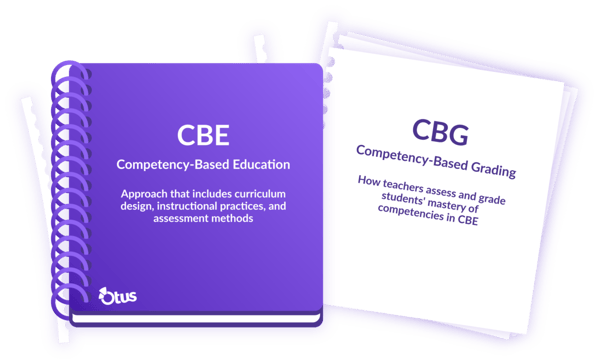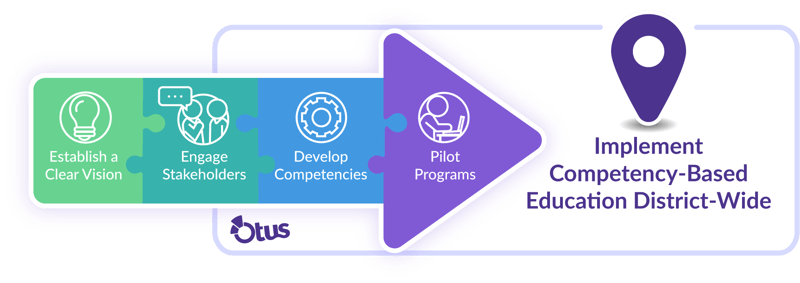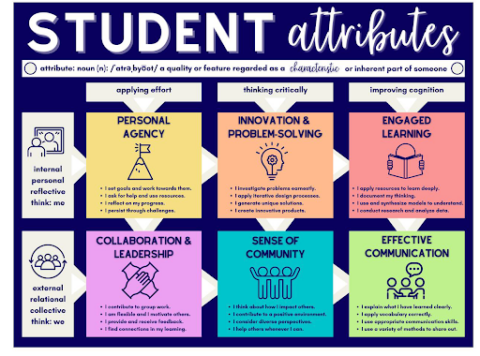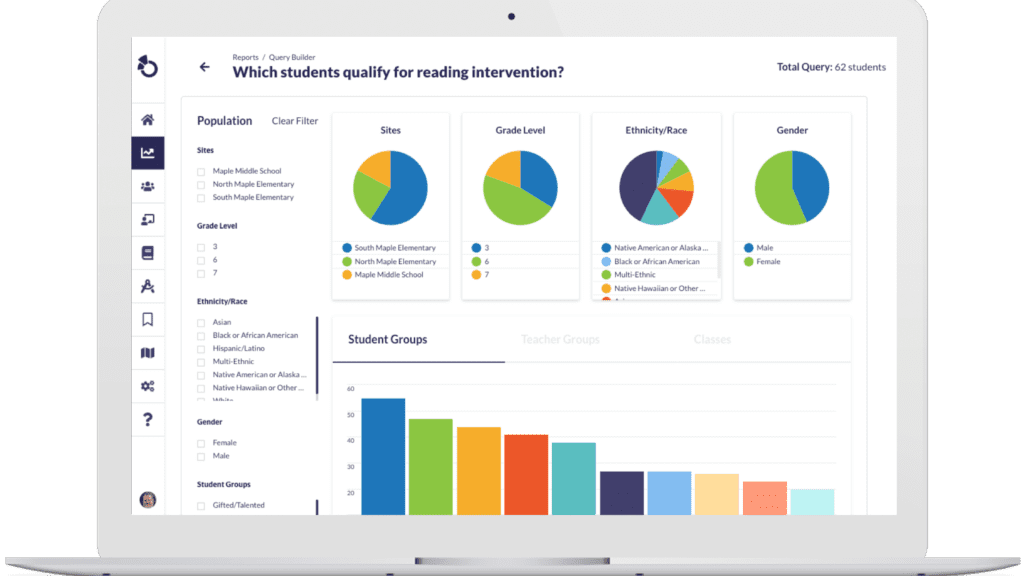The Complete Guide to Supporting District-Wide Innovation with Competency-Based Education
By: David Specht
Innovative approaches in education are essential for preparing students for future challenges and opportunities. Competency-based education is emerging as a key driver for educational innovation. This system emphasizes mastery of specific skills and competencies, offering a more personalized and meaningful assessment of student progress, known as competency-based grading.

Understanding Competency-Based Grading
Competency-based grading is the approach within competency-based education that focuses on students demonstrating mastery of specific competencies or skills, rather than accumulating points for traditional assignments and tests. This approach allows for a more accurate and individualized assessment of student learning.
Core Principles of Competency-Based Grading

- Mastery of Competencies: Students must demonstrate a clear understanding and ability to apply specific skills and knowledge. For example, a student might need to complete a project that showcases their proficiency in a particular math concept or conduct a science experiment that illustrates their grasp of scientific methods.
- Personalized Learning Paths: Each student’s learning journey is tailored to their needs, allowing them to progress at their own pace. Examples of this include customized lesson plans that address individual strengths and weaknesses, or adaptive learning software that provides exercises based on a student’s current skill level.
- Flexible Pacing: Students can move forward as soon as they are ready, without being held back by traditional grade levels or timelines. For instance, a student who excels in a subject area can advance to more challenging material immediately, while another student might spend extra time reinforcing foundational concepts until they achieve mastery.
Benefits of Competency-Based Grading
- For Students: Provides clear expectations, reduces stress, and boosts motivation by focusing on mastery. For example, students can clearly see what skills they need to work on and are encouraged to achieve those competencies at their own pace, which reduces the anxiety associated with traditional grading.
- For Educators: Offers a detailed understanding of student progress and areas needing improvement, allowing for more targeted instruction. Examples of this include using data from competency assessments to tailor lesson plans to address specific gaps in knowledge or to provide enrichment activities for students who have already mastered content.
The Need for Innovation in Education
Traditional education systems often face challenges such as achievement gaps, lack of student engagement, and inadequate preparation for future schooling, careers, and life. For instance, the 2019 National Assessment of Educational Progress (NAEP) reported a decline in 12th-grade reading scores compared to 2015. Alarmingly, 30% of 12th-grade students performed below the Basic level in reading, and 40% scored below Basic in math, indicating widening achievement gaps. Additionally, a Gallup Student Poll found that nearly half of students feel disengaged by the time they reach high school.
Competency-based education addresses these issues by focusing on individual student progress and mastery. This approach helps close achievement gaps by providing personalized support, keeps students engaged through relevant and challenging learning experiences, and ensures they are well-prepared for the demands of the future. For example, competency-based education allows students to progress at their own pace, leading to higher engagement and a more tailored learning experience that addresses each student's unique needs. Research has shown that competency-based education can improve student outcomes, particularly for underserved populations, by providing a more equitable and inclusive learning environment
Implementing Competency-Based Education at the District Level
So, you've decided to adopt competency-based education – but how do you make it work across an entire district? Transitioning to competency-based education can seem daunting, but with a clear plan and the right support, it can lead to significant improvements in student learning and engagement. Here are the essential steps to ensure a smooth and effective implementation.

- Establish a Clear Vision: Creating a successful competency-based education system begins with a well-defined vision. District leaders should outline specific goals and desired outcomes for the initiative, such as improving student engagement, closing achievement gaps, and better preparing students for college and career success. This vision should be clear, actionable, and aligned with the district’s broader educational objectives.
Example
For example, a goal might be to ensure that 90% of students achieve proficiency in core competencies by the end of the school year. Establishing this vision provides a roadmap for implementation and helps communicate the purpose and benefits of competency-based education to all stakeholders.
- Engage Stakeholders: Engaging stakeholders is crucial for the successful adoption of any new system. This involves creating committees or working groups that include teachers, administrators, students, and parents to gather input and build consensus.
Example
For instance, holding town hall meetings, focus groups, and workshops can provide platforms for stakeholders to express their concerns, offer suggestions, and understand the benefits of the initiative. By involving all parties in the planning process, the district can foster a sense of ownership and collaboration, ensuring that the transition to competency-based education is smooth and well-supported.
- Develop Competencies: Developing well-defined competencies is a foundational step in implementing competency-based education. These competencies should be specific, measurable, and aligned with both district and state educational standards.
Example
For example, competencies might include critical thinking, problem-solving, and effective communication skills. Districts can either create their own competencies or draw on inspiration from existing frameworks, ensuring they cover essential academic and non-academic skills. Detailed rubrics should accompany each competency to provide clear criteria for mastery, helping teachers accurately assess student progress.
- Pilot Programs: Implementing competency-based education district-wide can be a complex process, so starting with a pilot program can help identify potential challenges and refine the approach. Select a few schools or grade levels to implement the new grading system initially, allowing for a controlled environment to test and make adjustments.
Example
For example, a pilot program might focus on middle school math and science classes, where teachers can experiment with new grading practices and provide feedback. Collect data on student performance, teacher experiences, and stakeholder feedback during the pilot phase to inform broader implementation. This iterative process ensures that when competency-based education is rolled out district-wide, it is more likely to be successful and sustainable.
Role of Leadership
Strong leadership is key for the successful implementation of competency-based education. Leaders must actively promote the vision, ensuring that all stakeholders understand and are committed to the goals of the new grading system. This involves regular communication about the benefits and progress of the initiative. Leaders should also provide the necessary resources, such as funding for professional development, technological tools, and instructional materials. Additionally, they need to support ongoing professional development and create a culture of collaboration and innovation. For example, district leaders might organize workshops and seminars, facilitate peer learning communities, and provide mentorship programs to help educators transition to competency-based education smoothly.
Professional Development
Continuous training and support for educators are vital to the successful implementation of competency-based education. Professional development should focus on several key areas:
- Understanding Competency-Based Education Principles: Educators need to grasp the fundamental concepts of competency-based education, including how it differs from traditional grading systems, the importance of mastery, and how to create personalized learning pathways.
- Developing Effective Assessments: Teachers must learn how to design assessments that accurately measure student competencies. This includes creating clear rubrics, understanding formative and summative assessments, and using assessments to guide instruction.
- Using Data to Inform Instruction: Professional development should also cover how to collect, analyze and use data to improve teaching and learning. This includes tracking student progress, identifying areas where students need additional support, and adjusting instructional strategies based on data insights.
Competency-Based Education in Practice: A Case Study of Bio-Med Science Academy STEM School
Competency-based education is not just a concept – schools like Bio-Med Science Academy STEM School in Rootstown, Ohio, have successfully implemented this approach, using what they term as Mastery Grading. Bio-Med Science Academy STEM School’s system is deeply aligned with the principles of CBE, emphasizing mastery of specific skills and competencies before students can progress to the next level.
Mastery Learning at Bio-Med Science Academy STEM School
At Bio-Med Science Academy STEM School, students are required to master core curriculum concepts to move forward in their academic journey. This approach mirrors the CBE philosophy, where the focus is on ensuring students have a deep understanding and can apply their knowledge in real-world scenarios.
Bio-Med Science Academy STEM School uses Otus to track student progress, allowing teachers, students, and families to monitor mastery of competencies in real time. This ensures that students receive the necessary support and remediation if they do not achieve mastery on their first attempt. The goal is to develop students’ critical thinking and problem-solving skills, ensuring they can apply their learning beyond the classroom.
The Bio-Med Science Academy STEM School Mastery Scale
Bio-Med Science Academy STEM School's grading scale categorizes student progress into four levels: Mastery, Developing Mastery, Not Yet Mastered, and No Evidence of Mastery. This scale reflects a commitment to CBE’s core principles by providing clear, actionable feedback to students and educators. For example, a student may receive a Developing Mastery rating if they occasionally demonstrate the ability to comprehend essential content knowledge and skills, but their understanding lacks depth. To achieve Mastery, they should focus on attention to detail and work on stretching their creative muscles.

Student Attributes at at Bio-Med Science Academy STEM School
Bio-Med Science Academy STEM School’s approach to education is designed to develop a well-rounded, lifelong learner equipped with 21st-century skills. These attributes are woven into every aspect of the school’s curriculum, reflecting their commitment to producing students who can thrive in a complex, global society.

Connecting Mastery Grading to Competency-Based Education
While Bio-Med Science Academy STEM School refers to their system as Mastery Grading, it fits perfectly within the broader CBE framework. Both approaches prioritize student understanding and the application of skills over traditional grade accumulation. By requiring mastery before progression, Bio-Med Science Academy STEM School ensures that students are not just passing through the curriculum but are truly ready for the next challenge.
Bio-Med Science Academy STEM School serves as a powerful example of how schools can innovate using CBE principles to provide students a more personalized effective educational experience.
How Otus Supports Competency-Based Education
Thinking about how to manage all the components of competency-based education? That’s where Otus comes in. With its powerful features and user-friendly platform, Otus is designed to simplify the process of implementing and sustaining competency-based education, helping educators focus on what truly matters – student learning and success. Here's how Otus can support competency-based education in your school district.
Tracking Student Progress on Competencies
Otus helps educators to track student progress on individual competencies. Teachers can monitor each student's mastery of specific skills and knowledge areas, making the learning path clear and actionable. Educators can easily visualize which competencies students have mastered and which areas require further attention.

Providing Personalized Feedback and Resources
One of the standout features of Otus is its ability to facilitate personalized feedback. Educators can provide detailed, individualized feedback that helps students understand their strengths and areas for improvement. This feedback is essential for guiding students toward mastery.

Facilitating Data-Driven Decision Making
Otus integrates data from every source, enabling educators to make informed, data-driven decisions about instruction and intervention. The Otus platform consolidates assessment results, attendance records, behavior reports, and third-party data such as state and national tests into one accessible location. This holistic view allows teachers to identify trends and patterns, tailor their instructional strategies, and implement targeted interventions.

Streamlining Communication
Effective communication is critical in supporting student success, and Otus excels in streamlining communication between educators, students, and families. The Otus platform offers various communication tools, including messaging, announcements, and progress reports. These features ensure that all stakeholders are aligned on student progress and goals. By adopting Competency-based education and leveraging tools like Otus, districts can foster innovation, improve student outcomes, and better prepare students for future success. With Otus, educators have the resources they need to support personalized learning, make data-driven decisions, and communicate effectively with all stakeholders.
Related Resources
Request a demo!
See exactly how Otus can help your school accelerate student growth and improve student outcomes – all while saving educators time.




